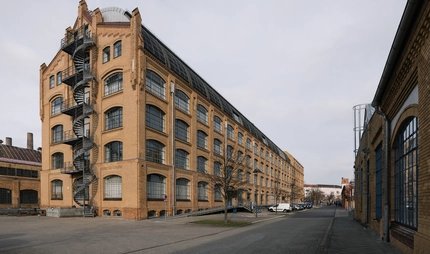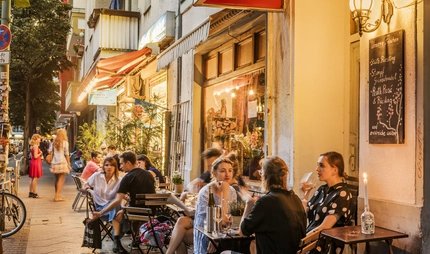
Walter-Gropius-Schule
Germany's first comprehensive school
Walter Gropius came up with a modern spatial concept for Germany's first comprehensive school in Gropiusstadt.
Right from the start of planning for the Gropiusstadt settlement, it was clear that a school building should also be built. The special feature: the then schools minister Carl-Heinz Evers wanted to establish a school in Gropiusstadt which pursued a different pedagogical path from the three-tier school system. Walter Gropius took on the architectural planning and the school celebrated its opening in 1968.
Pioneer of German education reform
The Walter-Gropius-Schule was the first comprehensive school in Germany, minister Evers called it the "Mother Monastery of Comprehensive Schools". On the occasion of the school's tenth anniversary in 1978, Wolfgang Flößner, then headmaster of the school, made a speech: "The history of educational reform in the Federal Republic of Germany is to a large extent also the history of the Walter-Gropius-Schule."
This is where key impulses for new concepts in education originated. For example, the all-day school: pupils stayed at school in the afternoon and experienced open learning concepts. And also a longer stay at primary school: pupils did not move to secondary schools after four years, but went to the comprehensive secondary school after Year 6. Last but not least the course system: the lessons were divided into core and special subjects, and compulsory and elective courses. This differentiated offering proved better adapted to the individual strengths and weaknesses of the pupils.
At the end of the 1960s, these approaches were still largely unknown in the Federal Republic, and teachers and pupils in Gropiusstadt were entering uncharted pedagogical territory.
Points and stars in the architecture
Walter Gropius devised an unusual floor plan for the new school. The five free-standing buildings were arranged as pavilions in a semicircle around the “Fachhaus”. Within a pavilion, the hexagonal classrooms were arranged around a centre point in such a way as to form a star-like basic shape with three or five points. Each classroom was adjoined by a group room at the point of the star, taking into account the more open forms of learning. The pupils worked together not only as a class, but also in smaller groups.
Gropius linked the buildings by means of covered passageways. He thus created a framework for the schoolyard and opened the way to the school nursery, workshops and gymnasium.
The Bauhaus master deliberately kept the interior décor simple. Originally he wanted to design the interior walls with unplastered concrete, but in the end the choice fell on a somewhat friendlier, tinted wall plaster.
As a whole, Gropius' school building looked robust and almost defensive, some even believed it resembled a "flak bunker".
The Walter-Gropius-Schule celebrated its 50th anniversary in 2018. The concept of the Bauhaus Curriculum began to emerge from the 2016/17 school year onwards. Within this framework, teachers create interdisciplinary teaching material whose content and objectives are inspired by the Bauhaus movement.
Our tips for nearby Gropiusstadt
If you visit the Walter-Gropius-Schule, you should also take a walk through the Gropiussiedlung planned by the architect himself. The high-rise buildings are an expression of the urban ideals of the 1960s. In Baumläuferweg you will encounter architecture from a completely different century: the Jungfernmühle from 1757 is the oldest preserved mill in Berlin. It originally stood in Potsdam and in 1892 it arrived at its present location in Buckow via a number of detours. Inside, the Jungfernmühle restaurant welcomes its guests – we recommend reserving a table! Two interesting sacred buildings are located in Lipschitzallee: the Evangelische Dreieinigkeitskirche (Evangelical Trinity Church) built between 1969 and 1971 with three towering pointed roofs and the Catholic St. Dominicus-Kirche (Church of St. Dominicus) built between 1975 and 1977 with its unique conical roof. If you want to see a particularly important Berlin Modernist building, take the U7 to the Parchimer Allee stop, to Bruno Taut's famous Hufeisensiedlung (Horseshoe Estate).
Practical information from visitBerlin
The Walter-Gropius-Schule has normal school operation from Monday to Friday during the school year. Please take this into account when planning your visit. To reach the Walter-Gropius-Schule, take the U-Bahn line 7 to the Johannisthaler Chaussee or Lipschitzallee stops. To explore the city, we recommend the Berlin WelcomeCard for public transport.



